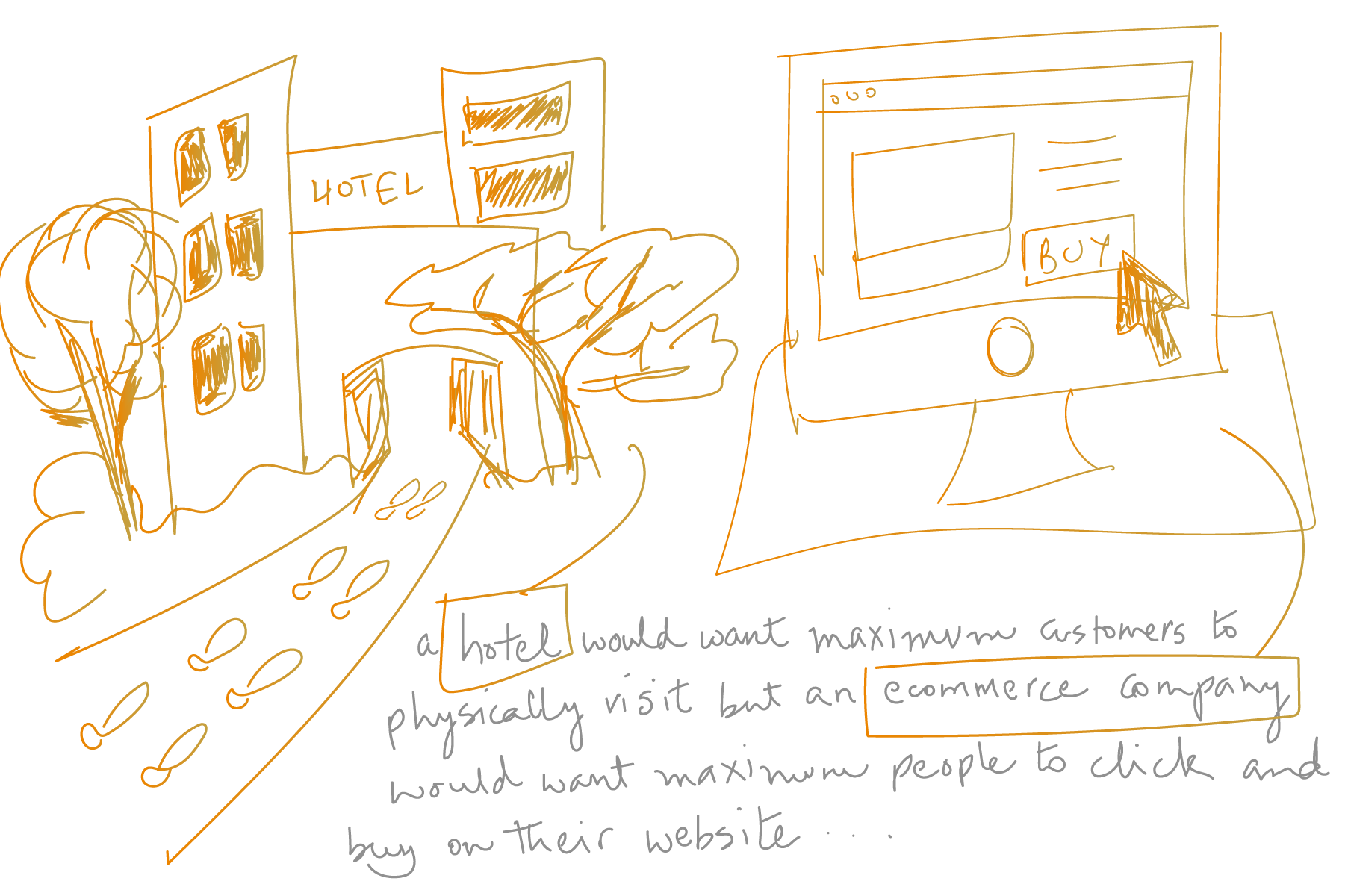be a value contributor: build your understanding - part 2 of 2

Over my career I have been working with some great organizations across verticals like human development, academic research, hospitality, enterprise, big data, ecommerce, marketing and design, and classifieds.
I hope you will find these observations from my career worthwhile. This post has two parts. You are about to read Part 2. Part 1 precedes here. Please feel free to reach out at @huzemaqyum.
Understand the Business
The user personas you identify and the preferred values you associate with each need to be in-line with the business you represent. There is no other way around it.
Keeping the larger business perspective in mind tremendously helps in not just keeping your efforts aligned with the overarching goal of the company but also expediting the process.
During my hotel consultancy days, there was a long-term business requirement to create awareness amongst customers about the various company-owned properties in the northern side of the country. We did our homework on customers who traveled more frequently and identified their preference. This helped us shortlist some frequent travellers who also v-logged their experiences and had a good influence on their followers to help them choose their next trip. We planned annual activities with these influencers where they created v-logs about their experiences as they travelled from one property to another across the northern side. To add more fun, we coupled this with a vintage car rally which brought a whole new level of festivity to the campaign. What followed was a tremendous increase in footfall across properties. Customers were very receptive of high end services offered in the chain’s properties as compared to other lackluster lodgings in those areas that come with a bunch of compromises. The whole activity helped expedite business’s long term goal and achieve the forecasted growth earlier on with higher sustainability because of the immense positive image building.

More recently while working in the classified domain, our company introduced a platform for agencies (users) who wanted to have a robust platform to be able to manage their ads, promote them, and track leads. The business goal was to expedite conversion by onboarding the maximum number of agencies to the platform. While the agents could create individual ads on the new platform, they wanted a way to be able to migrate their existing ads in bulk from other previously used platforms (value). Rightly so because creating thousands of ads one by one doesn’t really present a great image when you are looking to increase conversion to your platform. We took this opportunity to introduce a bulk ingest tool for agencies with our tech team’s support. This resulted in a reinforced bond with the agencies as we not just understood their need but also promptly reciprocated by providing lasting value in the new tool. For agencies this was a delight indeed and for business we were able to pump up the conversions.
Users, their expected values, business goals - all aligned.
Understand Key People
Identifying the right users and choosing the right values to commit on can only be done if you are closely aligned with the internal stakeholders. For insights on business understanding key internal people is crucial.
Remember, this does not in any way mean aligning with your supervisors alone. It is equally important that you align with the teams working under you.
An approach that helped through my career is that you should consider yourself as a mediator. Someone who has to ensure both ends get maximum value without hurting any business goals.
In the tech sector, as service providers, we are mostly presented with very open-ended client scenarios. While the client is just concerned about the high-level goal that is defined by the stakeholders at his end for a specific project, for actual implementation details regarding architecture and technology stack one has to closely coordinate with internal engineering teams. You have to understand and address their concerns and drive decisions accordingly with the client.
On one data migration project for a large enterprise, we faced the challenge of adhering with strict coding practices and guidelines that were already in place at the client’s end. While the guidelines made perfect sense for the legacy tech stack, they were a bit too dated for the new application layer that was to be built as part of the migration effort. With closer follow ups with the stakeholders on client’s side, we were able to identify one of their product owners who was the most concerned that any compromise in guidelines will cause their legacy codebase to break. After internal discussions with the engineering team, we proposed doing a time-boxed proof of concept for the client to assure that nothing will break in their current system and there will be no compromises in the new application either. The task our team took up in the decided two weeks helped bring clarity for the concerned product owner. He agreed on the revised guidelines that we proposed for the new application layer. To add more value, we also had training sessions with the leads in his team to onboard them on the new stack. What could have been an initiation of lack of trust between the two teams ended up being a confidence builder.

Internally in your workplace, you should be able to identify individual stakeholders for the different areas of work concerning you. The sooner you build your understanding of who to look for, how to reach out to, where and when, the sooner you will be in a position to add lasting value. Engage with these stakeholders more often, discuss ideas and prospects, explore what-if scenarios, brainstorm around improvement areas. Who gives a final go ahead on a campaign design, what is he looking for? Who is the authority on procurement and what prerequisites will they require before they approve the new devices for your team? Who will be the right group of people to push for an improved implementation of a feature in your product? So on and so forth.
I hope you will find these observations from my career worthwhile. I am quite confident that these efforts will help you go a long way regardless of your current company and current role.

Member discussion